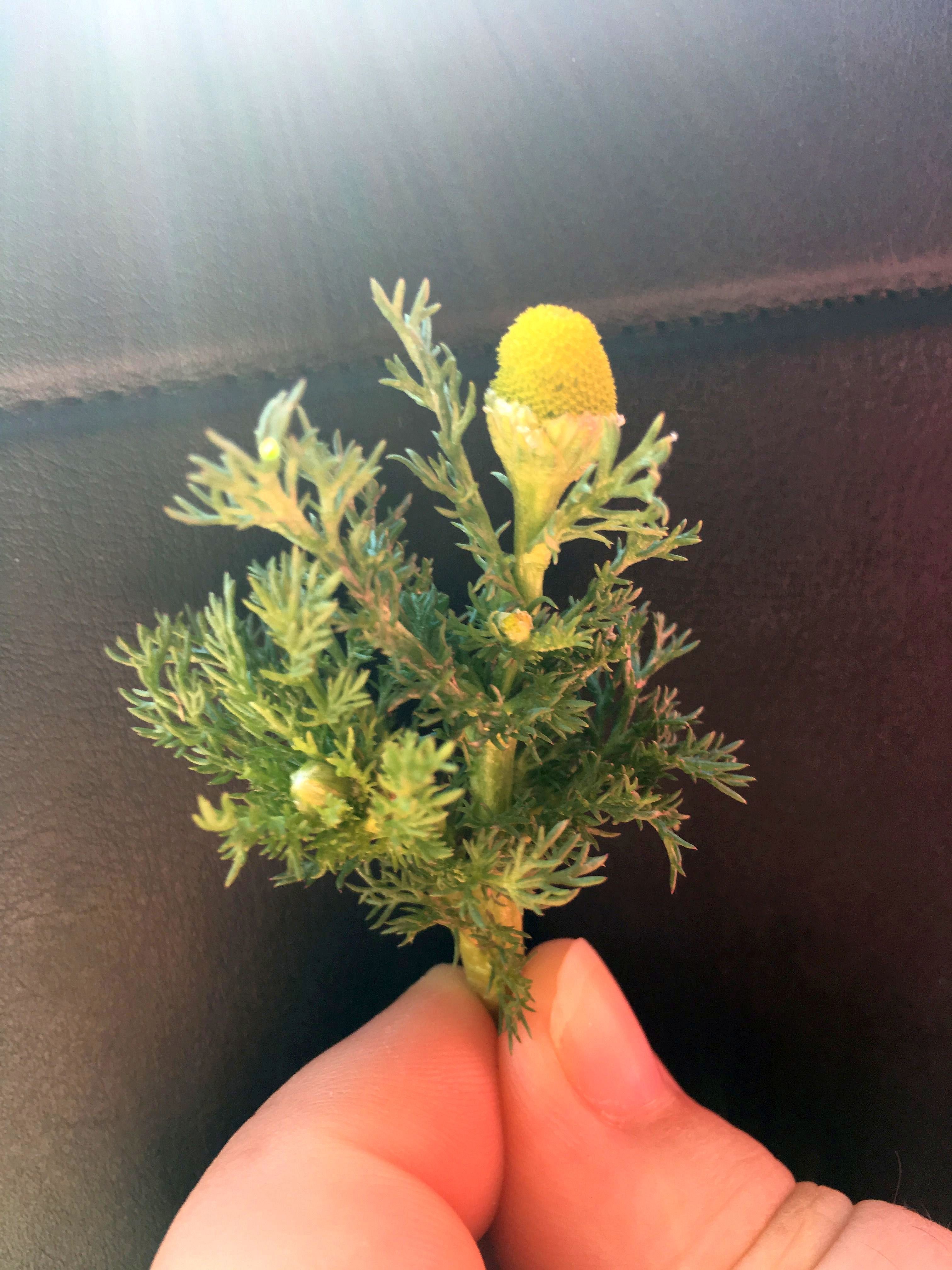
I take a measure of pride in being able to identify various tiny weeds in the spring of the year. Pointing them out to a car-group of friends, one of them adventured out on their own and brought back a tiny plant I felt sure I could make quick work of. But the little plant, with its almost lacy leaves and tiny egg-shaped yellow ‘flower’ mystified me completely. I sniffed it and detected a most unusual odor that nevertheless was not unpleasant. It resembled a cross between a tiny evergreen tree and an egg or pineapple. It was not a pineapple, but it was wild chamomile or the pineapple weed (Matricaria discoidea).
Research cited below, by Daise Lopes & Paul P. Kolodziejczyk references the essential oil composition of pineapple weed as containing the following major fractions:
- myrcene (28.5%)
- (E)-β-farnesene (23.4%)
- germacrene D (6.8%)
- geranyl isovalerate (6.4%)
- (Z)-en-yn-dicycloether (8.1%)
During our time, many have become interested in herbal uses for generally unfamiliar plants. This article cites chemical components and the evident uses of those substances both by this edible plant itself and by manufacturers.
Myrcene is a monoterpene. That is, it can be derived from just two small isoprene units. Its primary function may be to impart a pleasant fragrance.
β-farnesene is a sesquiterpene. It is composed of three isoprene units. It appears it may primarily serve as an insect repellant.
Germacrene D
Geranyl Isovalerate
Note: You might also enjoy reading Terpenes and Terpenoids: Isoprene Rule
References:
- Journal of Essential Oil-Bearing Plants: Essential Oil Composition of Pineapple-Weed (Matricaria discoidea DC.) Grown in Canada, Daise Lopes & Paul P. Kolodziejczyk
- The Good Scents Company: geranyl isovalerate